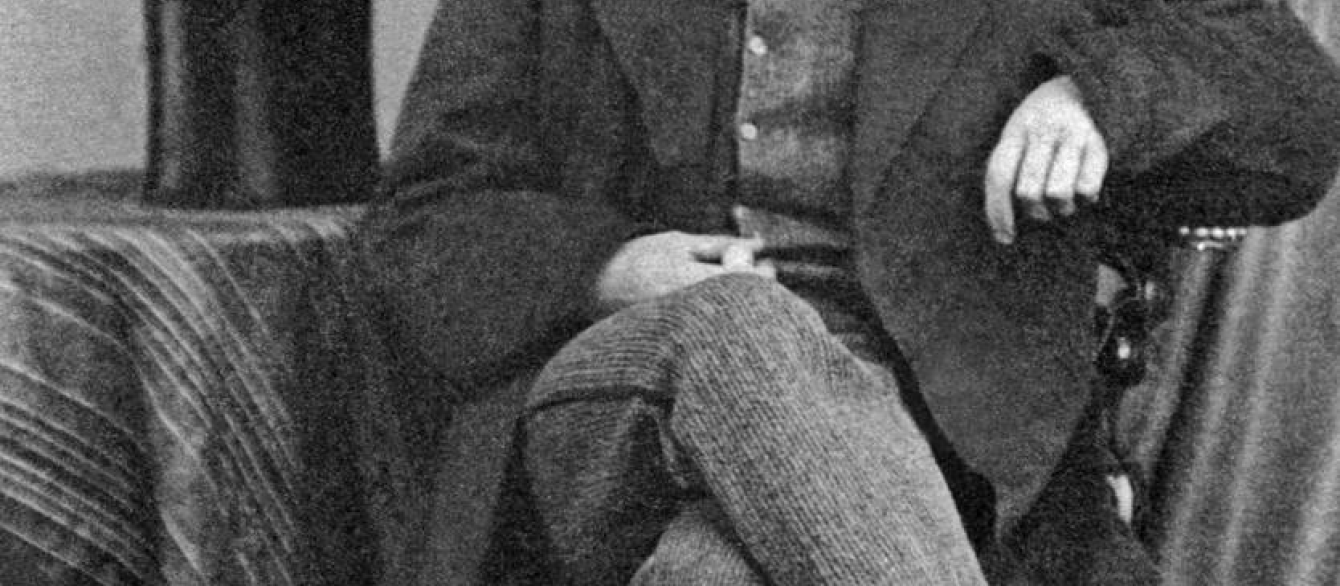The text below is a summary of the author's thesis, for which she was awarded the 2025 Kathryn W. Davis Prize for undergraduate research. The work was presented at our annual Undergraduate Colloquium on Russian and Eurasian Studies, which the Davis Center has hosted since 1996, when Kathryn W. Davis first committed her support to showcase work in the field by students from Harvard, Wellesley, and Wheaton colleges.
Count Leo Tolstoy is best known for his masterful works of fiction. But his later philosophical writings on religious and ethical issues had an enormous influence on global nonviolence movements — most famously those led by Mahatma Gandhi and Martin Luther King, Jr. While it is tempting to view these two strains of writing as essentially separate, close examination shows that Tolstoy’s views on violence remained remarkably consistent from the 1860s onward, and germinated even earlier. Far from being the sudden product of a late-life religious crisis, Tolstoy’s influential theory of radical nonviolence stemmed from these much older conceptualizations of violence, shaped in great part by his own experiences.
Tolstoy’s Emerging View of Violence
By 1861-1862, when Tolstoy worked in earnest on a never-finished essay titled On Violence, he had been gravitating toward this topic for at least 15 years. His early explorations include several recurring ideas key to his later invocations of radical nonviolence; two of the most prominent were skepticism about the legitimacy of governments that rely on force and doubt about rulers’ use of Christianity to justify oppression. Both are present in a piece from 1847, when Tolstoy was only 18, analyzing an old directive by Catherine the Great. Soon after, another theme emerged: a deepening sense of the wrongness of violence in general.
In the 1850s, Tolstoy’s military service and experiences in Western Europe — particularly witnessing a public execution in Paris in 1857 — bred in him a revulsion toward war and other government-sanctioned violence. An imperial censor unsurprisingly deleted this section from one of Tolstoy’s earliest stories, The Raid (1852): “War! What an incomprehensible phenomenon! When one’s reason asks: ‘Is it just, is it necessary?’ an inner voice always replies ‘No.’ Only the persistence of this unnatural occurrence makes it seem natural, and a feeling of self-preservation makes it seem just.” In the excised text, Tolstoy criticizes Russian policy in the Caucasus, where he served, and expresses sympathy for local people’s resistance. His disgust with war grew deeper during his time fighting in the Crimean War and is palpable in his Sevastopol Stories (1855), which established his reputation as a writer and brought him widespread acclaim in Russia.
Tolstoy’s views on violence crystalized in the 1860s, most clearly in three works: On Violence (not published until 1936 and translated into English only in 2022), War and Peace (1863-1868), and the essay “Some Words About War and Peace” (1868). Through both abstract and historical approaches, he develops a theory distinguishing between individual and systemic violence. Violence, in his view, is a tool the powerful use to control the weak. Society is organized in such a way that those who command others do not bear the violent consequences of their decisions and those who are commanded and carry out violence do not bear moral responsibility for their actions. People have the capacity for free action but have created systems that suppress this freedom. This bleak view of the world carried Tolstoy into a period of dissatisfaction with the government, the military, and organized religion, which escalated into a total denunciation of all three. In this way, his exploration of violence in the 1860s laid the foundation for his theory of nonviolence, rooted in a complete rejection of the state and nonparticipation in its institutions.
Moral Truth as True Freedom
In the 1870s, Tolstoy went through an intense spiritual struggle that resulted in a commitment to live according to Christ’s teachings — especially not to resist evil by force. He publicized his beliefs in What I Believe (1884) and later in The Kingdom of God Is Within You (1894), which addresses his critics and articulates his nonviolence in depth. This later book builds on ideas Tolstoy developed in the 1860s — on the nature of violence and freedom of action. In it, Tolstoy argues that there is a sphere in which humans possess complete freedom: their conscience. Thus, a person’s freedom does not lie in independent action but in recognizing or rejecting moral truth.
According to Tolstoy’s theory, first developed in On Violence, humanity cannot regress in development; instead, it moves forward irreversibly along a path of positive progress. But to continue along this path requires the destruction of governments, since they rely on violence and consequently cannot fulfill Christ’s teaching of nonresistance to evil by force. The key moral question becomes: How do we resolve the conflict between conscience and violent state authority? Tolstoy’s answer is to awaken people to their inalienable freedom: Within each individual is an instinctive affinity for Christ’s teachings in the Sermon on the Mount. Tolstoy’s message to his contemporaries is essentially this: Realize that state power and the duties it requires stand in opposition to the moral consciousness inherent in every person and begin to live according to Christ’s teaching.
The Law of Love in a Violent Context
The years after The Kingdom of God Is Within You was published were marked by increased violence in Russia — with revolutions, pogroms, and the Russo-Japanese War (1904-1905). With violence emanating not only from the state but from its critics, those who envisioned a different future for Russia, Tolstoy felt keenly that his message of love, nonresistance to evil by force, and true Christianity was more necessary than ever before. In 1908, two years before his death, he published The Law of Violence and the Law of Love, again urging people to reject violence as a foundation for society. As in his earlier writings, he defined violence as a coercive relationship that cannot produce lasting peace.
Tolstoy argued that violence may force actions but never thoughts, creating only illusory unity. A society built on coercion inevitably fosters resentment and future retaliation. The only real alternative is what he called the Law of Love. Tolstoy called for a transformation in how people relate to one another — not through power, but through conscience and love.
His message was met with enthusiasm, not only in Russia but around the world. Rather than founding a sect, Tolstoy sought to inspire personal moral awakening. One powerful example of this influence is Gandhi, who credited The Kingdom of God Is Within You as a pivotal factor in his turn toward nonviolence. “When I went to England, I was a votary of violence,” Gandhi recalled in a 1928 speech commemorating Tolstoy. “After I read this book, that lack of faith in nonviolence vanished.” Through Gandhi, Tolstoy’s vision evolved into a strategic philosophy that shaped 20th-century peace movements.
Tolstoy’s way of thinking about nonviolence effected significant political change in the West and worldwide, through Gandhi’s nonviolent campaign for Indian independence in the 1920s-1940s and King’s preaching of nonviolence, which shaped the U.S. civil rights movement of the 1960s. Tolstoy’s message of nonviolence is as relevant today, under Russia’s Vladimir Putin and in the context of the ongoing war in Ukraine, as it was during the writer’s lifetime. Tolstoy continues to be taught in classrooms across Russia — ironic, considering his strong anti-state, anti-war message. Today, it is time to remember Tolstoy as more than the great novelist who wrote War and Peace and Anna Karenina; it is time to remember him as a fierce opponent of oppression and a passionate, compelling voice for nonviolence.






